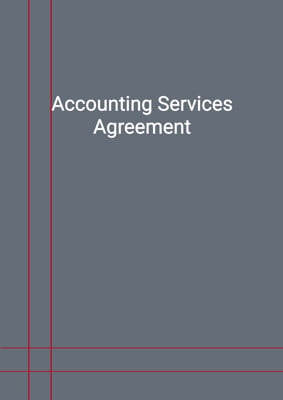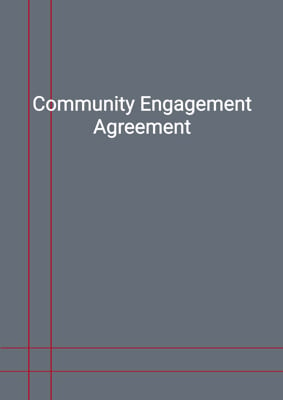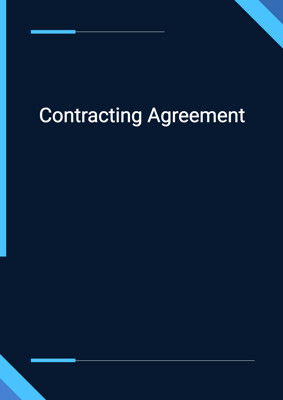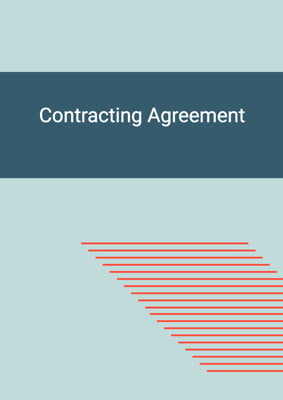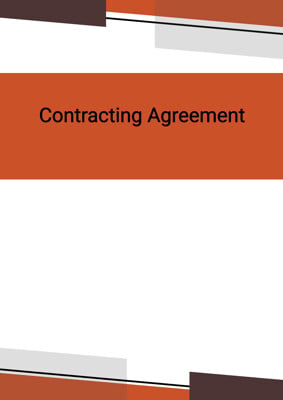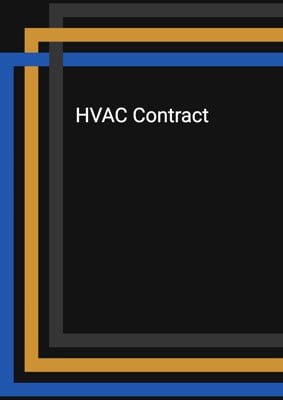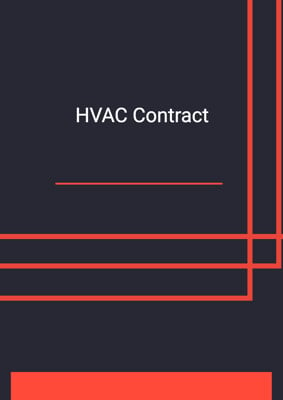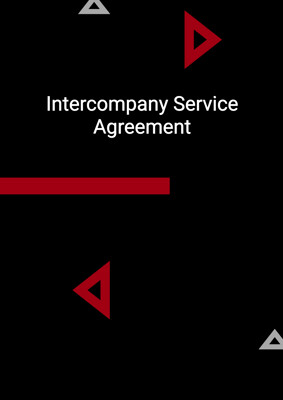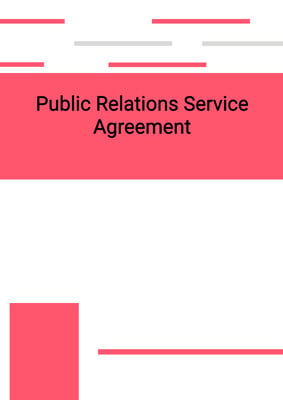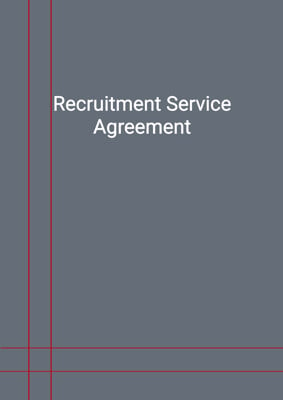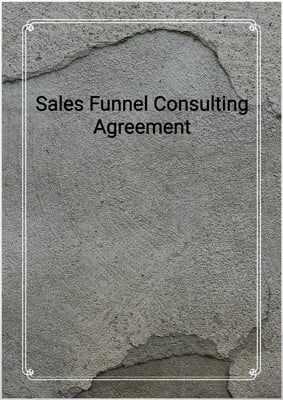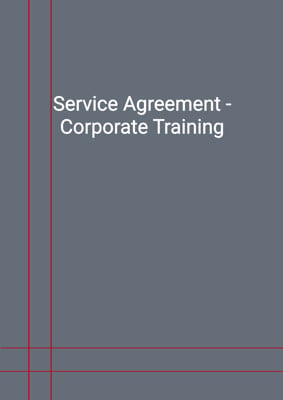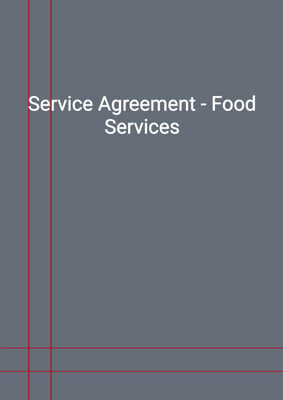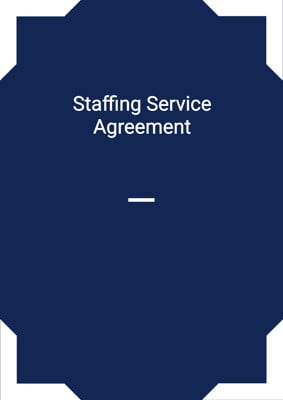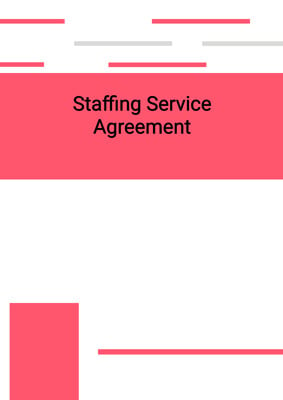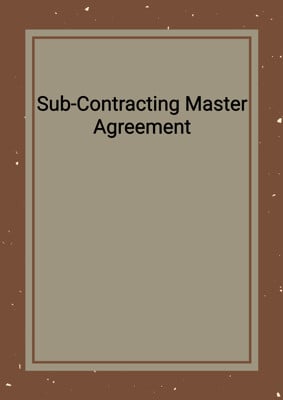How to Tailor the Document for Your Need?
01
Create Document
Fill in the details of the parties. You can click the "Fill with Member’s Information" button to complete it with information saved to your account.
02
Fill Information
Please fill in any additional information by following the step-by-step guide on the left hand side of the preview document and click the "Next" button.
03
Get Document
When you are done, click the "Get Document" button and you can download the document in Word or PDF format.
04
Review Document
Please get all parties to review the document carefully and make any final modifications to ensure that the details are correct before signing the document.
Document Preview
Document Description
The Contracting Agreement is a document that establishes a legal relationship between two parties, namely the Company and the Contractor. This agreement outlines the services to be performed by the Contractor for the Company, the terms and conditions of the agreement, and the responsibilities of each party.
The importance of this document cannot be overstated as it serves as a binding contract that protects the rights and interests of both parties. It ensures that both the Company and the Contractor are aware of their obligations and responsibilities, and provides a framework for resolving any disputes that may arise.
The entire document is divided into several sections, each addressing a specific aspect of the agreement. The first section provides a general introduction, stating the names and addresses of the parties involved. It also clarifies that the Contractor will provide services to the Company on a non-exclusive basis, and that no partnership or agency relationship is created.
The second section focuses on the term of the agreement, specifying the completion date for the services to be performed by the Contractor. It also states that the agreement will terminate one year after the date of its execution, subject to certain conditions.
The third section deals with fees and expenses, outlining the payment terms and schedule agreed upon by the parties. It also states that the Contractor is responsible for any applicable taxes.
The fourth section emphasizes the importance of compliance with laws and regulations. Both parties are required to adhere to all applicable laws and take necessary steps to remedy any violations. The Contractor is also obligated to report any material changes or problems that may affect the services.
The fifth section introduces the concept of a contingency plan, which the Contractor is required to provide to the Company upon request. This plan outlines the steps to be taken in case of unforeseen events or disruptions.
The sixth section outlines the responsibilities of both parties. The Company agrees to facilitate the provision of services by the Contractor, while the Contractor agrees to fulfill its obligations under the agreement. The Contractor is prohibited from further subcontracting the services without prior consent.
The seventh section limits the liability of both parties, excluding consequential losses from any claims. However, it clarifies that liability for breach of confidentiality is not restricted or limited.
The eighth section emphasizes the importance of confidentiality. Both parties are required to keep all information provided by the other party confidential, except in certain specified circumstances. Breach of confidentiality may result in specific performance or injunctive relief.
The ninth section prohibits the assignment of rights, obligations, or responsibilities under the agreement without prior written consent. It also states that the terms and conditions of the agreement are binding on both parties and their successors.
The tenth section confirms that each party has the necessary corporate authority to enter into the agreement and agrees to negotiate additional documents or agreements if required.
The eleventh section provides contact details for both parties and specifies the method of communication for notices and other communications.
The twelfth section states that the agreement constitutes the entire agreement between the parties and supersedes any prior agreements. It also allows for amendments to the agreement with the written agreement of both parties.
The thirteenth section specifies the governing law and jurisdiction for any disputes arising from the agreement.
In conclusion, the Contracting Agreement is a crucial document that establishes the rights, obligations, and responsibilities of both the Company and the Contractor. It provides a comprehensive framework for the provision of services and ensures that both parties are aware of their legal obligations.
How to use this document?
1. Enter the Contractor's and Customer's information in the agreement, including their principal place of business. This ensures that both parties are clearly identified.
2. Clearly specify the agreed price and completion date of the work to be carried out by the Contractor. This will ensure that both parties are aware of the expectations and deadlines.
3. Clearly describe the type(s) of services to be provided by the Contractor. This ensures that both parties are aware of the scope of work and can avoid any misunderstandings.
4. Both parties should agree on the length of warranty and time of payment after the completion of the work. This ensures that both parties are aware of the payment terms and the length of the warranty.
5. If the work is not completed by the completion date, specify the amount of damages per week that the Customer is entitled to. This ensures that both parties are aware of the consequences of non-completion.
6. The Contractor should provide a copy of its contingency plan to the Company and inform the Company of any changes. This ensures that both parties are prepared for unforeseen events or disruptions.
7. The Company agrees to facilitate the provision of services by the Contractor, while the Contractor agrees to fulfill its obligations under the agreement. Both parties should adhere to their respective responsibilities.
8. Both parties should be aware of the limitations of liability stated in the agreement, excluding consequential losses. However, liability for breach of confidentiality is not restricted.
9. Both parties are required to keep all information provided by the other party confidential, except in certain specified circumstances. Breach of confidentiality may result in specific performance or injunctive relief.
10. Neither party can assign any rights, obligations, or responsibilities under the agreement without prior written consent. The terms and conditions of the agreement are binding on both parties and their successors.
11. Each party should ensure that they have the necessary corporate authority to enter into the agreement. They should also be prepared to negotiate additional documents or agreements if required.
12. All notices and other communications should be sent to the appropriate party as specified in the agreement. It is important to maintain effective communication throughout the duration of the agreement.
13. The agreement constitutes the entire agreement between the parties and supersedes any prior agreements. Any amendments to the agreement should be made in writing and agreed upon by both parties.
14. Both parties should be aware of the governing law and jurisdiction specified in the agreement. This will determine the applicable laws and the jurisdiction for resolving any disputes.
By following these steps, both the Company and the Contractor can effectively use the Contracting Agreement to establish a mutually beneficial working relationship and ensure the successful completion of the contracted services.
Not the right document?
Don’t worry, we have thousands of documents for you to choose from:

